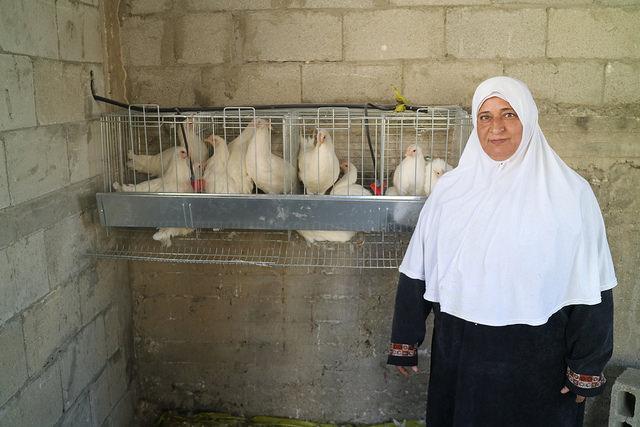Recent highly pathogenic H5N1 avian influenza outbreaks in Iraq and Lebanon pose a risk to other countries because of political instability and a host of other factors, such as wild bird migration and wintering habits, the United Nations Food and Agriculture Organization (FAO) warned in a recent report.
Countries at highest risk are Iran, Israel, Jordan, Syria, and Turkey, according to the group's recent 8-page report.
Recent outbreaks in Iraq, Lebanon
Iraq officially reported several H5N1 outbreaks from December 2015 through July 2016, affecting backyard bird and commercial farms in five governorates, some not far from the country's borders with Turkey and Iran.
Meanwhile, Lebanon confirmed H5N1 in April, affecting several farms in the eastern part of the country close to the Syrian border where refugees are settled. The investigation suggested illegal poultry movement as the source of the outbreak.
Genetic sequencing hasn't been done on the Iraqi samples, but the FAO said analysis of isolates from Lebanon suggests the viruses are most similar to ones isolated in wild and domestic birds from Bulgaria, Romania, and Turkey in the early months of 2015. The agency added that viruses in the 2.3.2.1c clade have also been implicated in recent poultry outbreaks in Cambodia, China, Vietnam, and West Africa.
Given earlier H5N1 outbreaks in the region and high levels of poultry production in the countries surrounding Iraq, there is a risk that H5N1 could become established and spread in the region, the FAO said.
Risk factors
Political instability has resulted in a large displacement of people and animals, with most refugees settling in agricultural areas. The FAO also said that continuing violence in the area has hampered farmers' cross-border trade.
Other factors the FAO noted are that migratory birds concentrate in Iraq and Lebanon as they prepare to fly to wintering areas in the Middle East. Drier weather patterns in Mediterranean coastal areas could also push birds toward wetter areas of Iraq and Kurdistan, where congregating flocks could spread avian flu viruses. In Lebanon, migratory bird hunting is an important socioeconomic activity, which could pose a threat of virus transmission to people or domestic poultry.
The FAO also pointed out several other vulnerabilities, including differences in veterinary capacity, ranging from the prompt response to H5N1 by Lebanese authorities to weak services in Syria because of civil unrest.
Countries most and least at risk
For the region as a whole, the FAO said the overall risk was medium, with medium uncertainty. However, it put Iran, Jordan, Syria, and Turkey at highest risk. Though no outbreaks have been reported in Syria, it is likely that H5N1 has already been introduced to poultry populations there, according to the report.
Medium-risk countries or regions are the Gaza Strip, Israel, Kuwait, Saudi Arabia, and the West Bank. The FAO warned that it's not clear how widespread H5N1 is in Iraq, but poultry movement in border areas of Kuwait and Saudi Arabia could pose a threat.
Armenia, Azerbaijan, and Georgia are at low risk owing to wild bird migration patterns and the low-to negligible role of the live-poultry trade. The FAO said Cyprus's risk is negligible, because the sea separates it from the two infected countries and because of its lack of poultry trade and not being on the wild bird migration route.
See also:
September FAO risk assessment






















